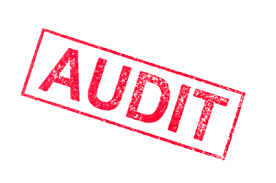Understanding Audit Reports: Types, Purpose, and Examples
Introduction
Audit Report play a crucial role in providing transparency and accountability in various sectors, including finance, government, and business. These reports serve as formal documents that communicate the results of an audit conducted by an independent party. In this article, we will delve into the world of audit reports, exploring what they are, their purpose, and the different types with examples.
What is an Audit Report?
An audit report is an official document that summarizes the findings of an audit, typically conducted by a certified public accountant (CPA) or an audit firm. The purpose of an audit report is to assess the accuracy and reliability of financial statements, compliance with applicable laws and regulations, and the effectiveness of internal controls within an organization. It provides stakeholders, such as investors, creditors, and regulators, with valuable insights into an entity’s financial health and adherence to established standards.
The Five Audit Reports
Unqualified Audit Report (Clean Opinion):
An unqualified audit report is the most desirable outcome of an audit. It signifies that the auditor has found no material misstatements or irregularities in the financial statements.
Example: “In our opinion, the financial statements present fairly, in all material respects, the financial position of XYZ Company as of [date], and the results of its operations and cash flows for the year then ended in accordance with [applicable accounting standards].”Qualified Audit Report:
A qualified audit report is issued when the auditor identifies specific issues or limitations that prevent them from providing an unqualified opinion. These issues are usually material but not pervasive.
Example: “In our opinion, except for the matter described in the Basis for Qualified Opinion paragraph, the financial statements present fairly, in all material respects, the financial position of ABC Corporation as of [date], and the results of its operations and cash flows for the year then ended in accordance with [applicable accounting standards].”Adverse Audit Report:
An adverse audit report is a serious and unfavorable opinion issued when the auditor discovers pervasive material misstatements or deviations from accounting standards.
Example: “We have audited the financial statements of PQR Ltd., which present an adverse opinion because the company’s accounting practices materially deviate from generally accepted accounting principles.”Disclaimer of Opinion:
A disclaimer of opinion is issued when the auditor cannot express an opinion due to significant limitations or uncertainties in the audit process.
Example: “We were unable to obtain sufficient appropriate audit evidence regarding XYZ Corporation’s financial statements, and as a result, we are unable to express an opinion on their fairness.”Explanatory Paragraph (Emphasis of Matter) Audit Report:
An explanatory paragraph may be added to an unqualified or qualified audit report to draw attention to specific matters, such as uncertainties or changes in accounting methods.
Example: “The financial statements of LMN Inc. are presented fairly, with the exception of Note X, which describes a significant uncertainty related to pending litigation.”Purpose of Audited Reports
The primary purposes of audit reports are as follows:
Assurance: Audit reports provide assurance to stakeholders that an organization’s financial statements are accurate and reliable.
Compliance: They verify compliance with legal and regulatory requirements, including tax laws and financial reporting standards.
Risk Mitigation: Auditors help identify risks and weaknesses in internal controls, allowing organizations to take corrective actions.
Decision-Making: Investors, creditors, and other stakeholders rely on audit reports to make informed investment and lending decisions.
Transparency: Audit reports promote transparency and accountability, enhancing trust in financial markets.
The Most Common Audit Report
The most common audit report is the unqualified audit report, also known as the “clean opinion.” It is issued when the auditor finds no material misstatements or deviations from accounting standards in the financial statements. This type of report is typically the goal of any audit and indicates a strong financial position and adherence to accounting principles.
Types of Audit Reports in PDF Format
To find audit report samples in PDF format, you can refer to authoritative sources such as the websites of audit firms, regulatory bodies, or government agencies. These organizations often provide publicly accessible audit reports that demonstrate the various types discussed earlier.
Types of Audit Reports
Unqualified Audit Report (Clean Opinion):
This type of audit report is considered the gold standard and is the most common outcome of an audit.
It signifies that the financial statements have been reviewed thoroughly, and the auditor has found no material misstatements or irregularities.
This report provides stakeholders with a high level of confidence in the accuracy of the financial information presented.
Auditors use unqualified reports when they believe that the financial statements comply with accounting standards and accurately represent the financial position of the organization.Qualified Audit Report:
A qualified audit report is issued when the auditor identifies specific issues or limitations that prevent them from providing an unqualified opinion.
These issues are usually material but not pervasive, meaning they do not affect the entire financial statement.
Auditors issue qualified reports to alert stakeholders to certain concerns or discrepancies while also providing assurance on the parts of the financial statements that are accurate and in compliance with accounting standards.Adverse Audit Report:
An adverse audit report is the most unfavorable outcome.
It is issued when the auditor finds pervasive material misstatements or significant deviations from accounting standards in the financial statements.
An adverse report signals serious problems, and stakeholders should exercise extreme caution when interpreting the financial information provided.
Organizations receiving an adverse report may need to take immediate corrective action to address the identified issues.Disclaimer of Opinion:
A disclaimer of opinion is issued when the auditor cannot express an opinion due to significant limitations or uncertainties in the audit process.
It indicates that the auditor was unable to gather sufficient evidence to form an opinion on the financial statements.
This type of report may arise when there are substantial accounting irregularities, missing records, or other factors that hinder the audit process.Types of Audit Reports with Examples
Here are more detailed examples of each type of audit report:
Unqualified Audit Report (Clean Opinion) Example:
“In our opinion, the financial statements present fairly, in all material respects, the financial position of XYZ Company as of [date], and the results of its operations and cash flows for the year then ended in accordance with [applicable accounting standards].”Qualified Audit Report Example:
“In our opinion, except for the matter described in the Basis for Qualified Opinion paragraph, the financial statements present fairly, in all material respects, the financial position of ABC Corporation as of [date], and the results of its operations and cash flows for the year then ended in accordance with [applicable accounting standards].”Adverse Audit Report Example:
“We have audited the financial statements of PQR Ltd., which present an adverse opinion because the company’s accounting practices materially deviate from generally accepted accounting principles.”Disclaimer of Opinion Example:
“We were unable to obtain sufficient appropriate audit evidence regarding XYZ Corporation’s financial statements, and as a result, we are unable to express an opinion on their fairness.”Where to Find Audit Reports in PDF Format
To find audit reports in PDF format, you can consider the following sources:
SEC EDGAR Database: The U.S. Securities and Exchange Commission (SEC) provides a searchable database of public company filings, including annual reports and audit reports in PDF format.
Audit Firm Websites: Many audit firms publish sample audit reports and client case studies on their websites. These reports can offer valuable insights into real-world audits.
Government and Regulatory Websites: Government agencies and regulatory bodies often publish audit reports for entities under their jurisdiction. Examples include the U.S. Government Accountability Office (GAO) and the Financial Industry Regulatory Authority (FINRA).
Corporate Websites: Some publicly traded companies may include their annual audit reports in the investor relations section of their websites.
Conclusion
Understanding audit reports and their various types is essential for both auditors and stakeholders who rely on these reports to make informed decisions. These reports serve as a cornerstone of financial transparency, providing valuable information about an organization’s financial health and adherence to accounting standards. Whether you are an investor, creditor, or part of an auditing team, a thorough understanding of audit reports is crucial for maintaining trust and confidence in financial reporting.
Source: Taxmann – Direct Tax Laws – audit reports




